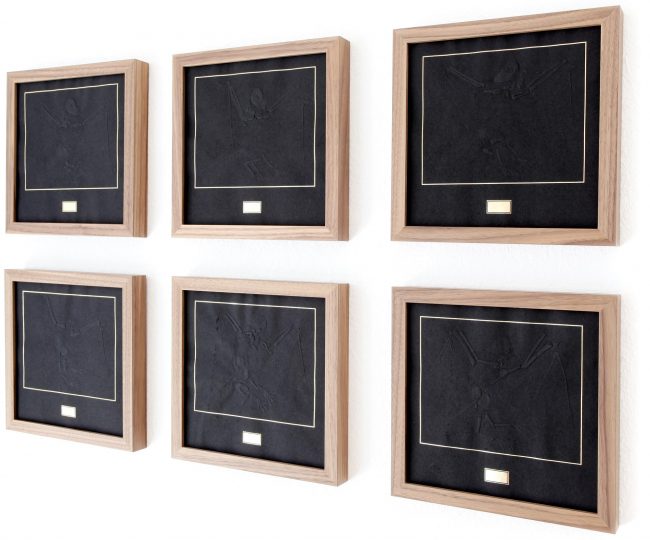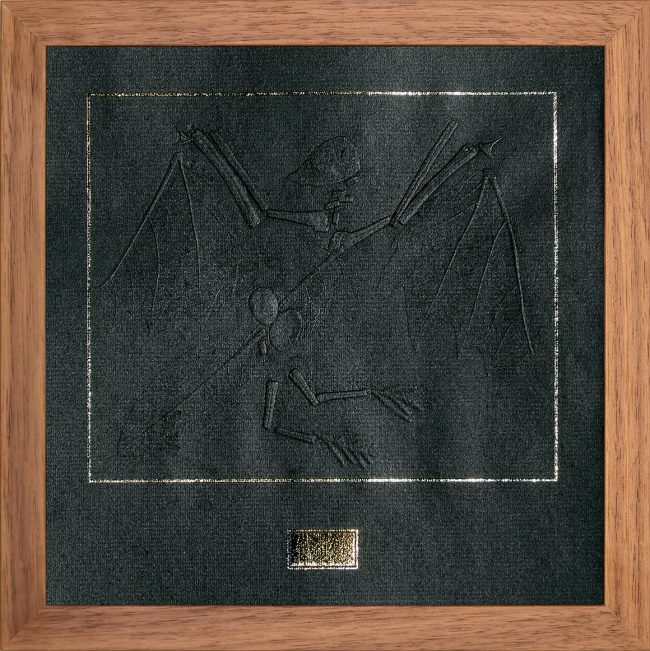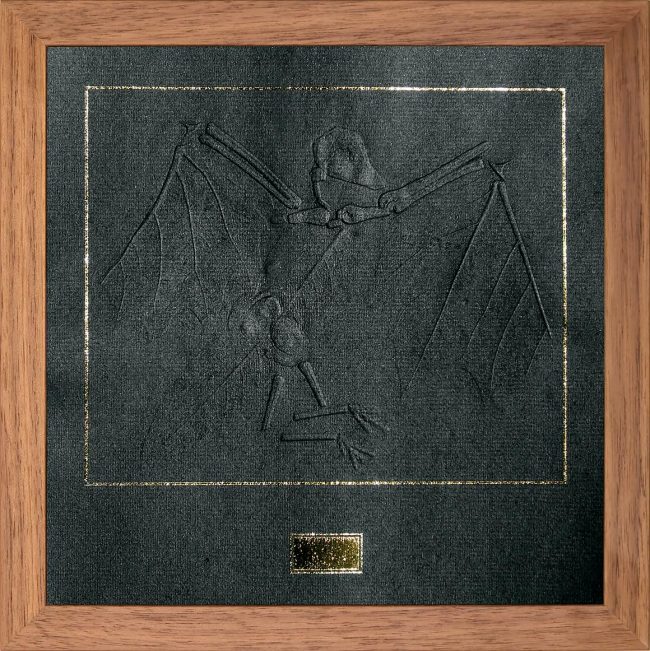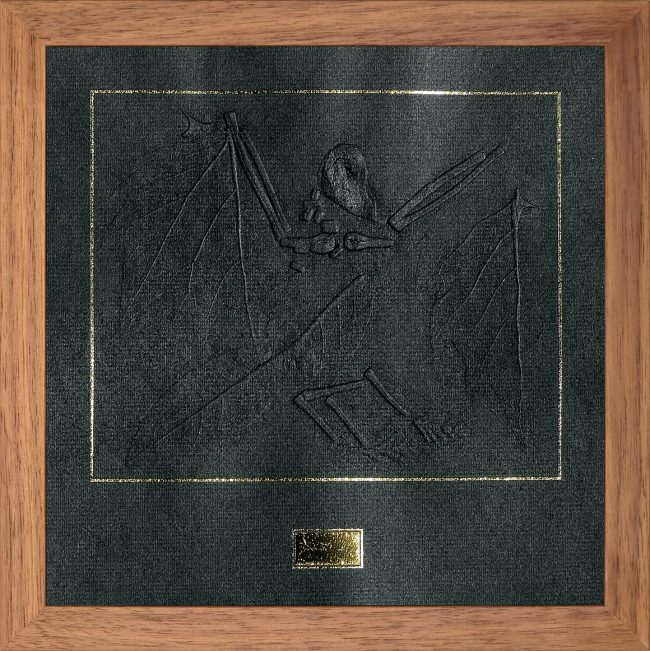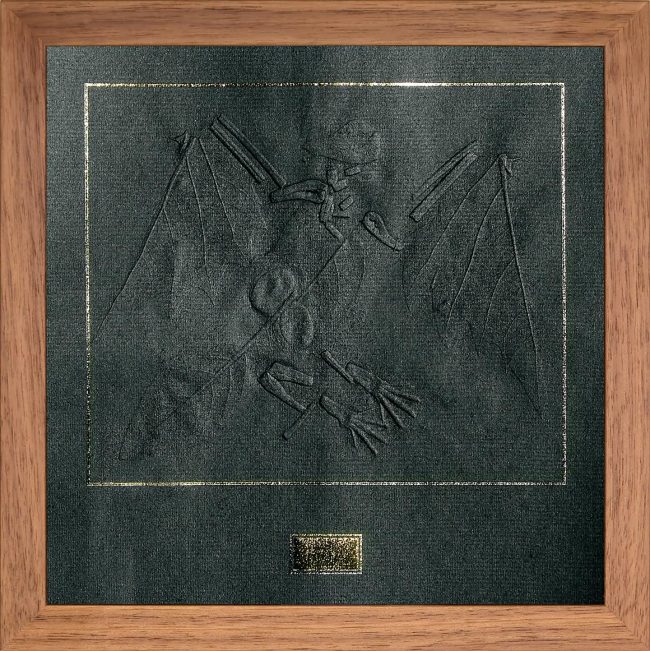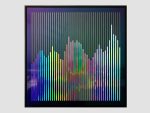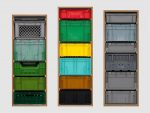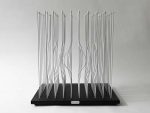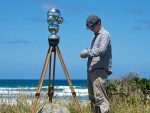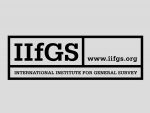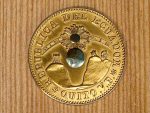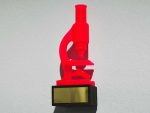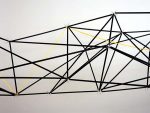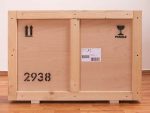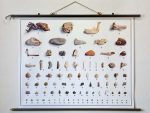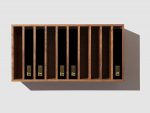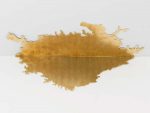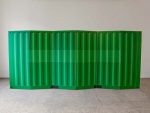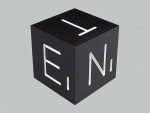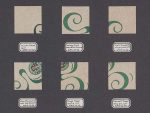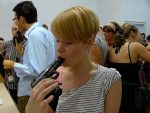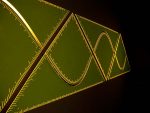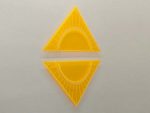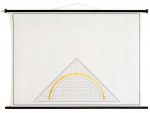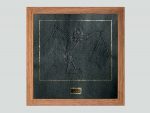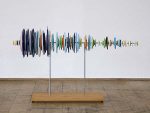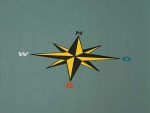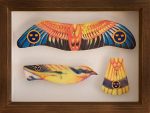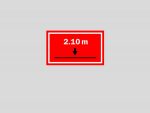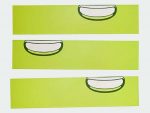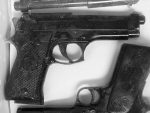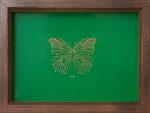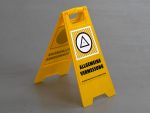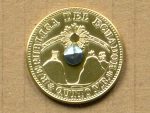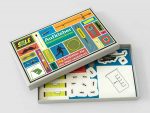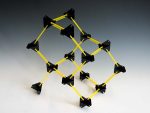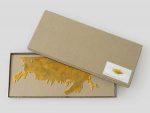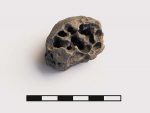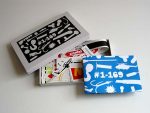Taxon
2007, embossed bütten-paper, gold foil, wooden frame, H 23.5 x W 23.5 x D 3 cm, each
Series of bütten-paper embossed with aerial parts of plants, showing the relief of the »Urvogel« Archaeopteryx as seen in fossils. The »Urvogel« rests within a golden frame and is specified by a golden only label.
The group presented in this work is the genus Archaeopteryx
The reliefs of the Urvogel (»original bird«) Archaeopteryx presented here are embossings that were made by using parts of plants. The parts of the body were embossed by pressing leaves, stems, thorns, and pods into the mold-made paper. Because the embossing materials are destroyed in the process of creation, the shapes of the parts of the Archaeopteryx’s body vary—each one is dependent on the embossing form used. As a result, even though the motif is always the same, each work is unique.
The gold framing underscores the dignity of the prehistoric Archaeopteryx. The gold nameplate below the representation provides a space for specifications. In terms of form, both the wooden and gold frames as well as the nameplate lend the artwork the appropriate museum-like character; in terms of content, they emphasize the classifying and categorizing character of a scientific collection. The taxon, the group, is located in a larger context. The blank nameplates in these works highlight the fact that it can often be extremely difficult to classify prehistoric findings with precision. The Archaeopteryx portrayed depicts a missing link, a transitional form, or rather, a connection between reptiles and birds. This link is reflected in the way the work is realized in formal terms: these birds pressed from plants can be assigned neither to the genus »plant« nor to the genus »bird.«
A taxon (plural: taxa; Greek táxis‚ arrangement, order, rank) in the field of biology describes a group of organisms recognized as a systematic unit.
